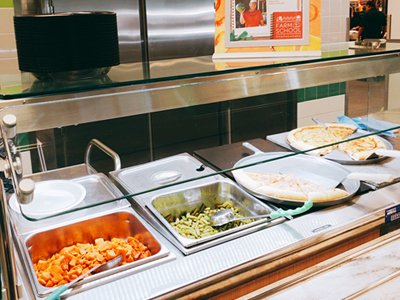Recess Before Lunch
Did you know that it’s best practice to shift the school schedule so students play at recess first, then eat lunch?
Read More How would you describe lunch at your school? Is the eating experience chaotic or stressful? Do students have enough time to eat enough food to meet their nutritional needs? Student lunch is also about having time to talk, laugh and socialize with friends. Socializing is an important aspect of dining because allowing students sufficient time to relate to others provides a break in routine and refreshes them for afternoon classes. Children enjoy their food more and may even try more healthy options if they can relax, eat, and socialize without feeling rushed.
How would you describe lunch at your school? Is the eating experience chaotic or stressful? Do students have enough time to eat enough food to meet their nutritional needs? Student lunch is also about having time to talk, laugh and socialize with friends. Socializing is an important aspect of dining because allowing students sufficient time to relate to others provides a break in routine and refreshes them for afternoon classes. Children enjoy their food more and may even try more healthy options if they can relax, eat, and socialize without feeling rushed.
The American Academy of Pediatrics recommends that students get at least 20 minutes for lunch. But that means 20 minutes to actually sit down and eat — excluding time waiting in line or walking from class to cafeteria. Does your school provide adequate time to eat?
Review your school district’s local wellness policy for any statements about specified time allotments for eating and use this information as a tool to advocate for sufficient time to eat.
Review your school schedule to determine if there are opportunities to schedule recess before lunch. This can eliminate challenges associated with students hurrying to eat to head out to recess.
Are there other activities that compete with time to eat like recess, open gym, clubs, activities and tutoring? Talk about the importance of enough time to eat with the people in charge of these activities to see if the can schedule activities for another time.
When meeting with the school nutrition director, school principal and administration, consider meeting over school lunch to help illustrate how limited time to eat can be.
Be patient! It may take time to work out all the details and garner the support to add minutes to meals, but it is time well worth it.
Increase lunch participation by having a closed campus during lunch! Encourage your students to stay at school, instead of going to outside restaurants by hosting taste tests and other active incentives.
Categories: Nutrition & Healthy Eating, At School, Digital Resource